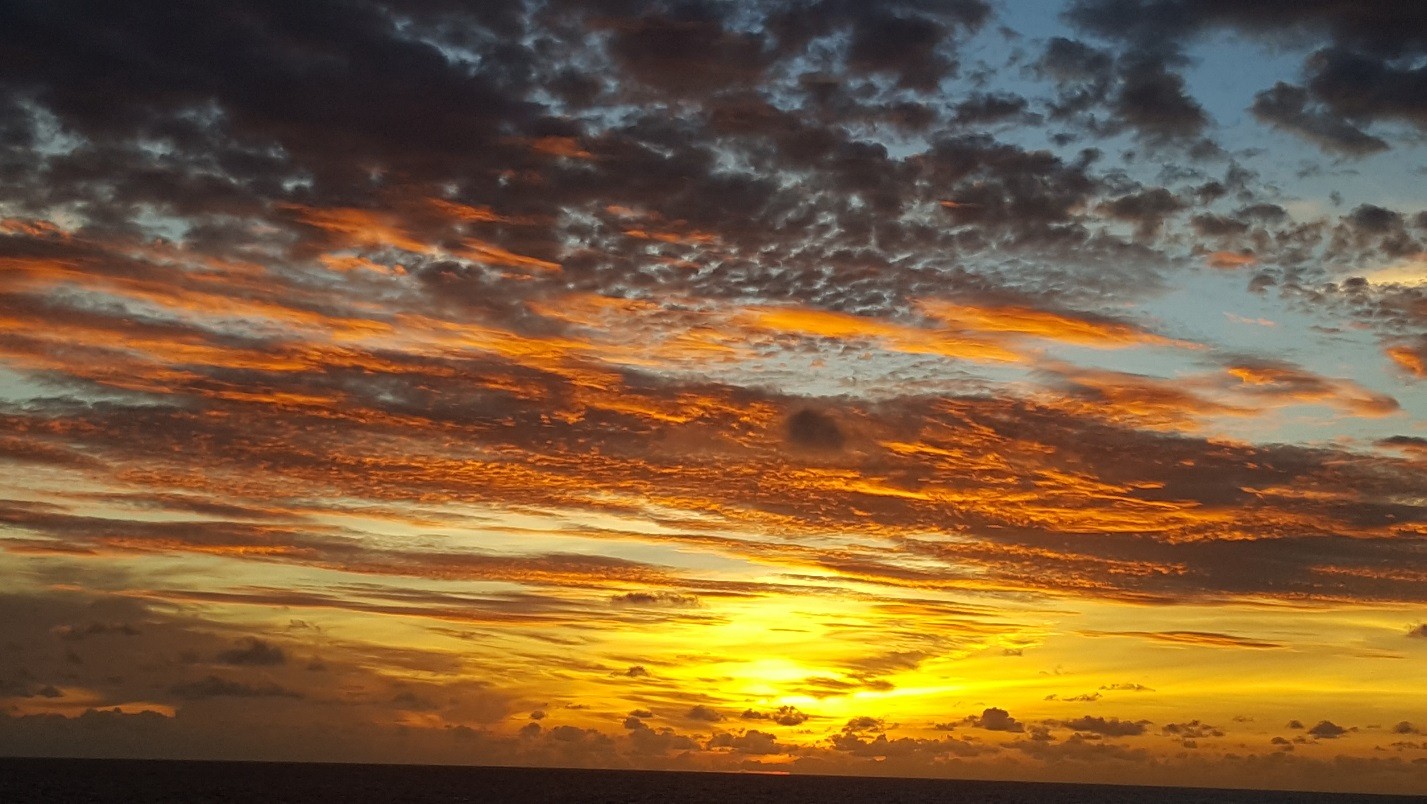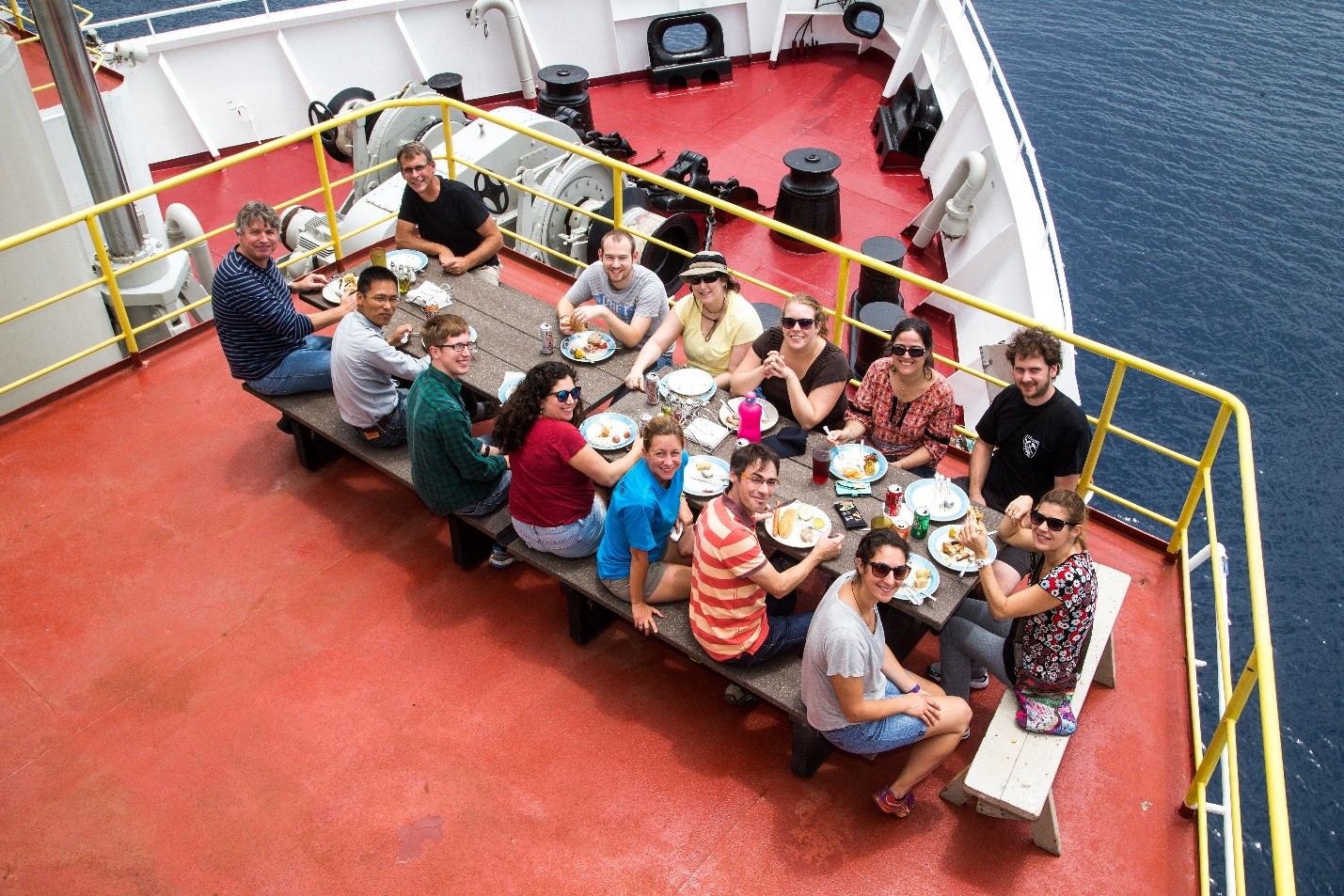My life at sea
Late last year, I spent two months living and working on a scientific research vessel, traveling from Singapore to the Island of Guam in Micronesia via Indonesia and Papua New Guinea.
Our mission was to retrieve sediment cores from nine sites that would allow us to reconstruct the climate history of the largest body of warm water on Earth: the Western Pacific Warm Pool.
This area acts as a global heat engine driving patterns of climate around the world, including the Asian monsoon and the El Nino-Southern Oscillation. So it’s very important to understand how this region may have changed in the past so we can improve predictions of future change.
Despite the cramped quarters, lack of privacy and internet, and occasional butting of heads, all in all, life on the boat was pretty awesome. Beautiful sunsets, laundry service, 24-hour catering, and truly incredible science.
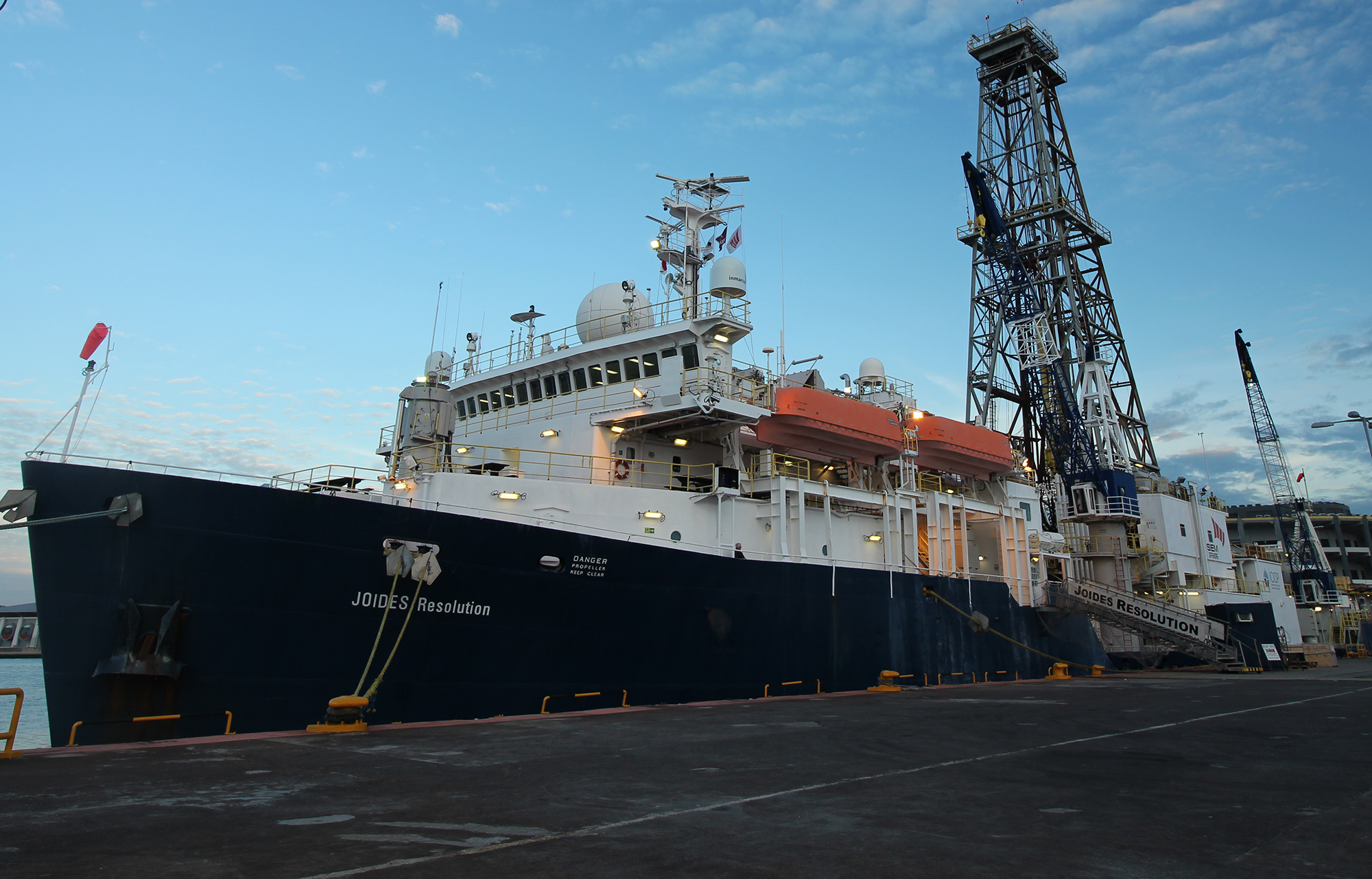 The R/V JOIDES Resolution docked in Singapore. Image credit: Takuya Sagawa
The R/V JOIDES Resolution docked in Singapore. Image credit: Takuya Sagawa
This was my home for two months, AKA the research vessel JOIDES Resolution (JR), travelling for the International Ocean Discovery Program’s (IODP) Expedition 363.
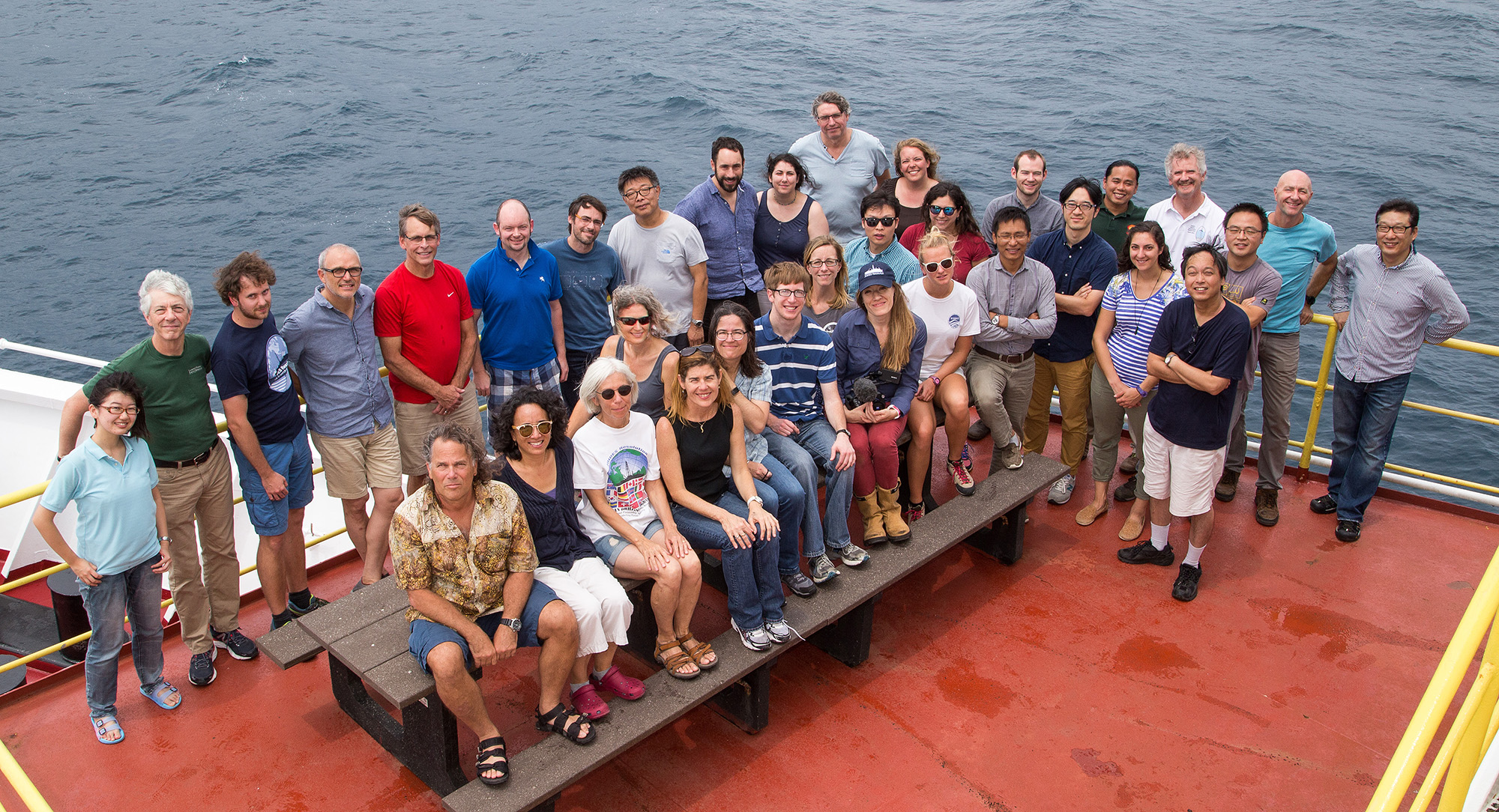 IODP Expedition 363 Science Party. Image credit: Bill Crawford
IODP Expedition 363 Science Party. Image credit: Bill Crawford
I was one of only two Australians invited to join the 30-member science party, which was made up of scientists around the world at all career levels, including PhD students like me and seasoned professors.
Every scientist on the onboard was there to contribute to the mission and to also ask their own questions.
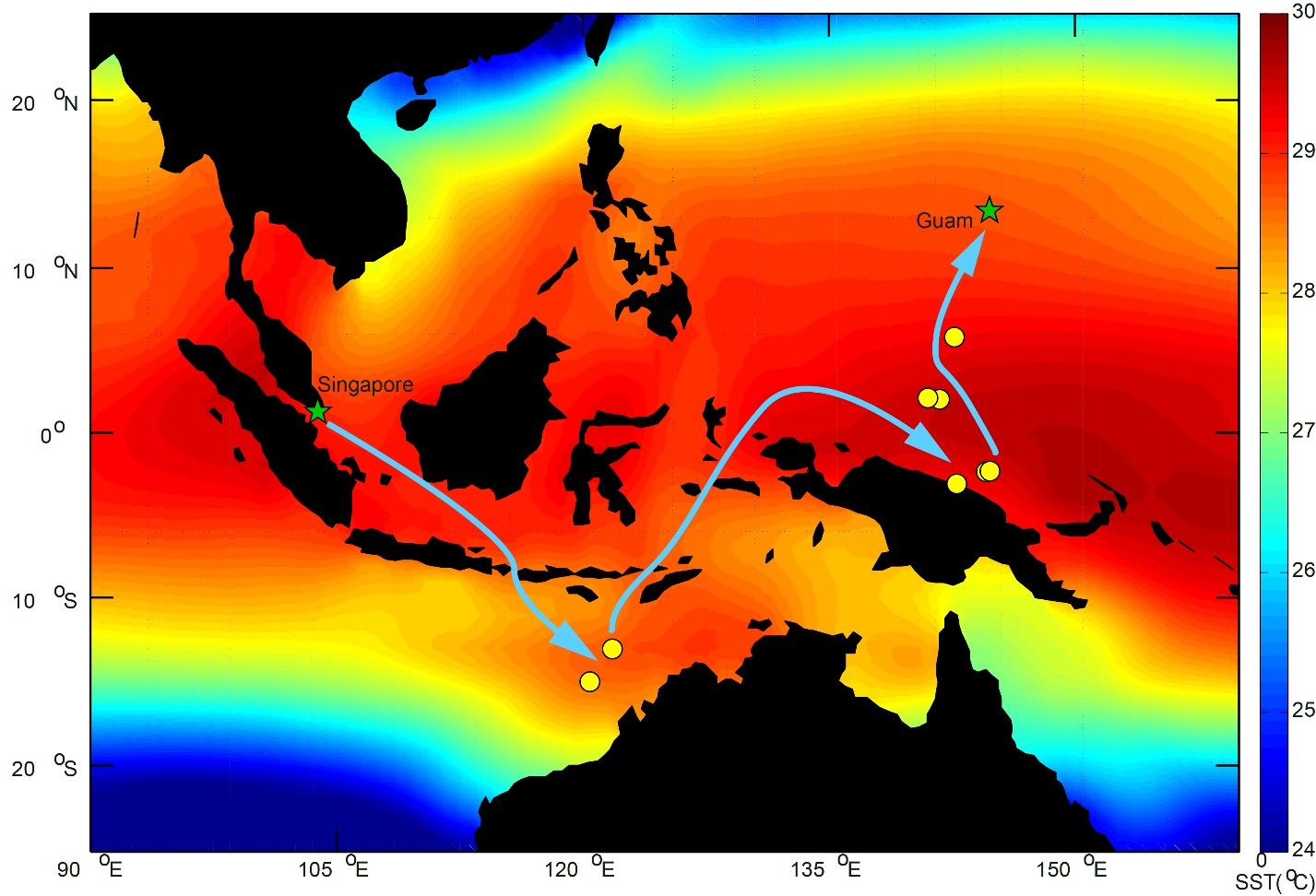 Map of average ocean temperatures in the Western Pacific Warm Pool, coring sites (yellow circles), and the route taken by the expedition (blue arrows). Image: Jennifer Wurtzel
Map of average ocean temperatures in the Western Pacific Warm Pool, coring sites (yellow circles), and the route taken by the expedition (blue arrows). Image: Jennifer Wurtzel
The material we gathered on the expedition will help to answer many of those research questions. I want to investigate how temperature and salinity have changed over the last 15,000 years. Others are interested in how those same variables have changed over the last 15 million years. And others want to examine changes in currents or water chemistry.
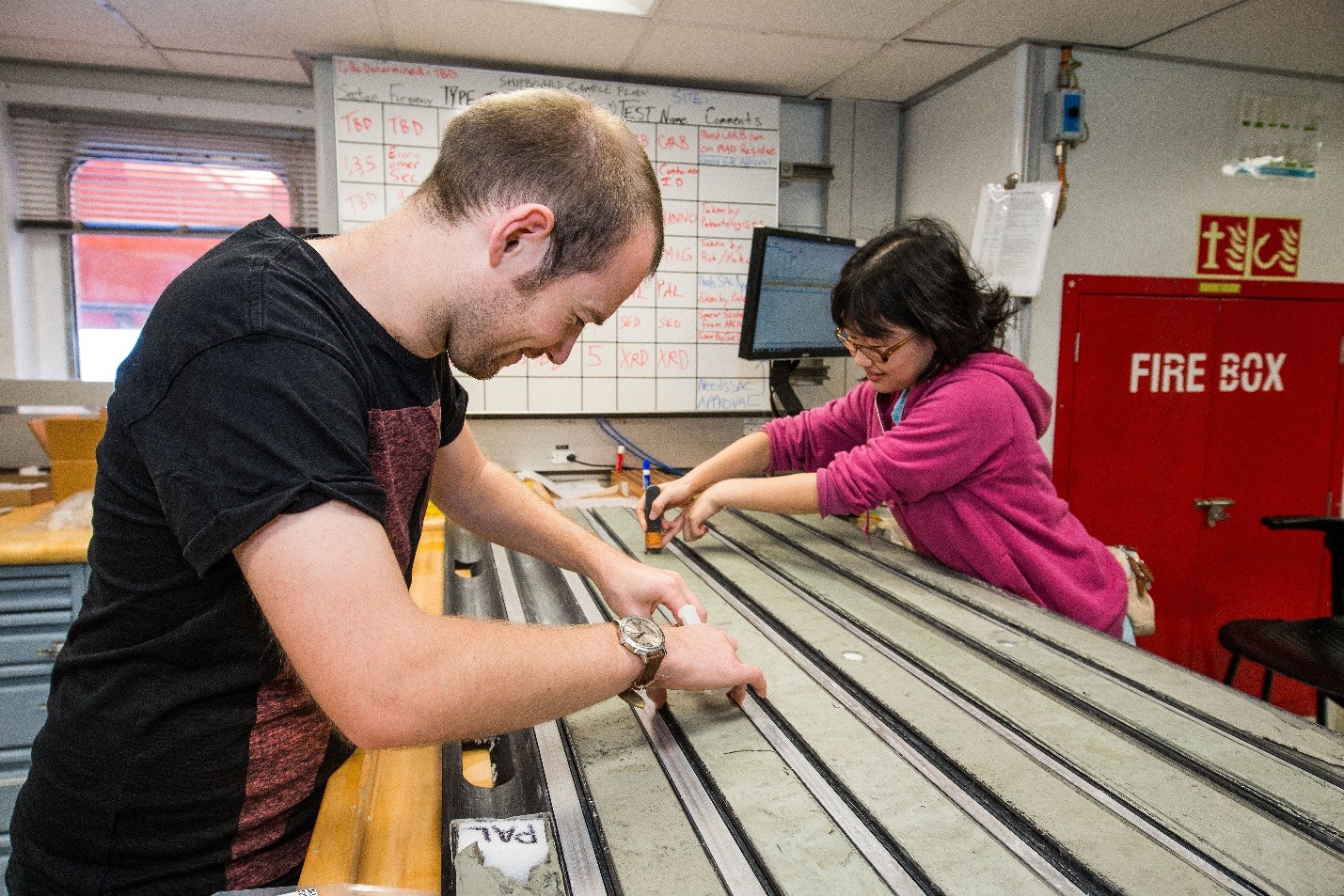 Two scientists sampling a core on board. Image: Bill Crawford
Two scientists sampling a core on board. Image: Bill Crawford
All scientists on board the JR are responsible for scanning, analyzing, and logging core properties as soon as the cores come on board. To accomplish this, we work in 12-hour shifts. I was on the noon-to-midnight 'sunset' shift.
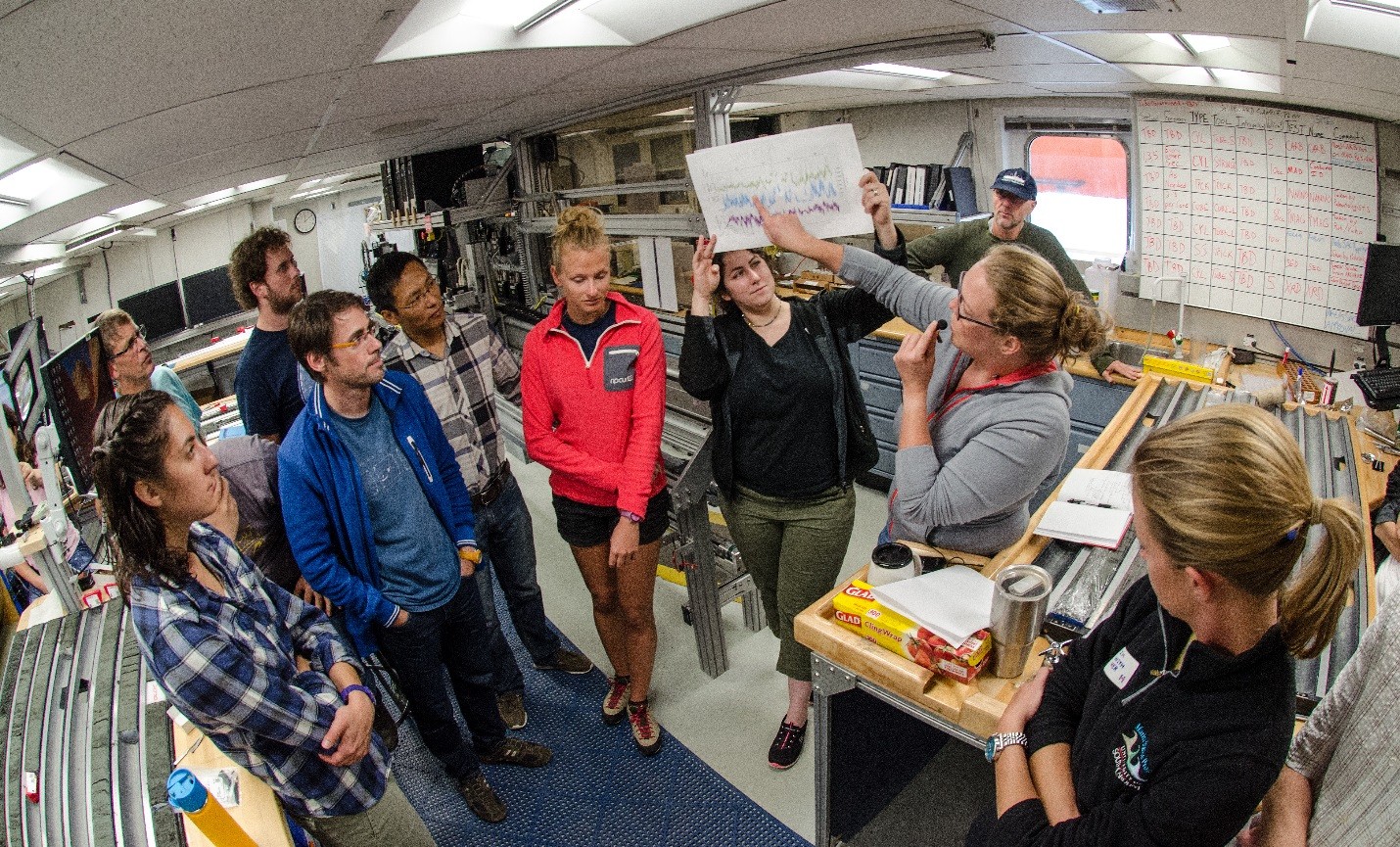 Sharing results at crossover time in between shifts. Image: Bill Crawford
Sharing results at crossover time in between shifts. Image: Bill Crawford
A typical day for me involved waking up around 11:15 am and rolling out of my bunk for a quick shower, leaving just enough time to grab a coffee from the button espresso machine in the mess (dining) hall, before arriving for the crossover meeting with the night shift, so that we can learn what was accomplished overnight.
Other than a 1-hour break for lunch, the day was usually non-stop core-processing. If we were between coring sites, there were reports to write up. At midnight, the end of my shift, the night shift would return, we would hand off the day's results to them, and I headed off to eat dinner.
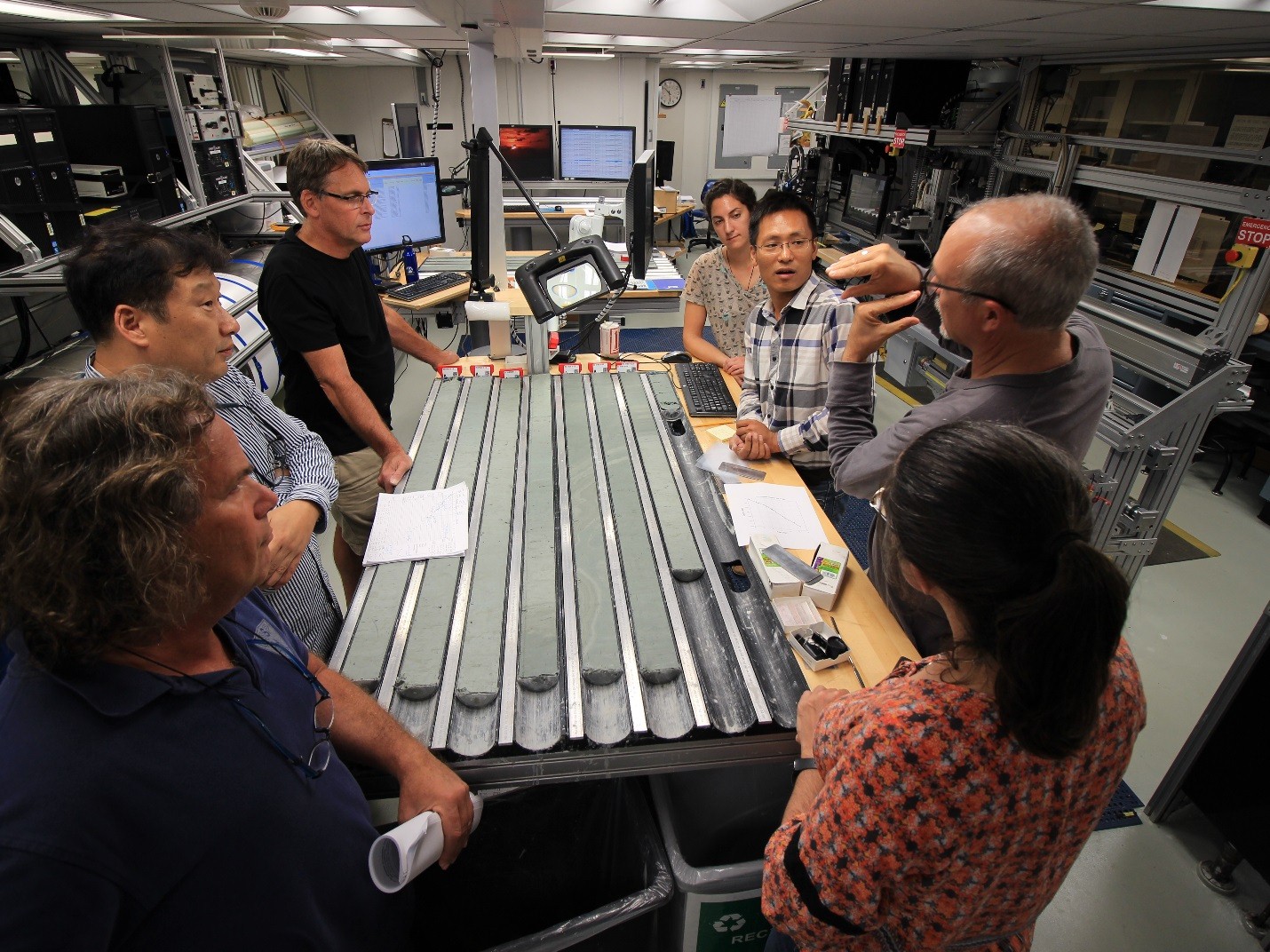 Discussing sediment features at the core description table. Image: Takuya Sagawa
Discussing sediment features at the core description table. Image: Takuya Sagawa
If I wanted a full night’s sleep, I had to be in bed by 3 am, which really only left two to three hours for recreation and relaxation. There were a few ways to pass the time. The JR has a well-stocked gym, which I regrettably failed to use past the first two weeks or so. There is also a movie room loaded with movies and TV shows, and a Popcorn machine.
A ping pong table was set up using tables from the conference room and there was an ongoing doubles tournament for the length of the cruise.
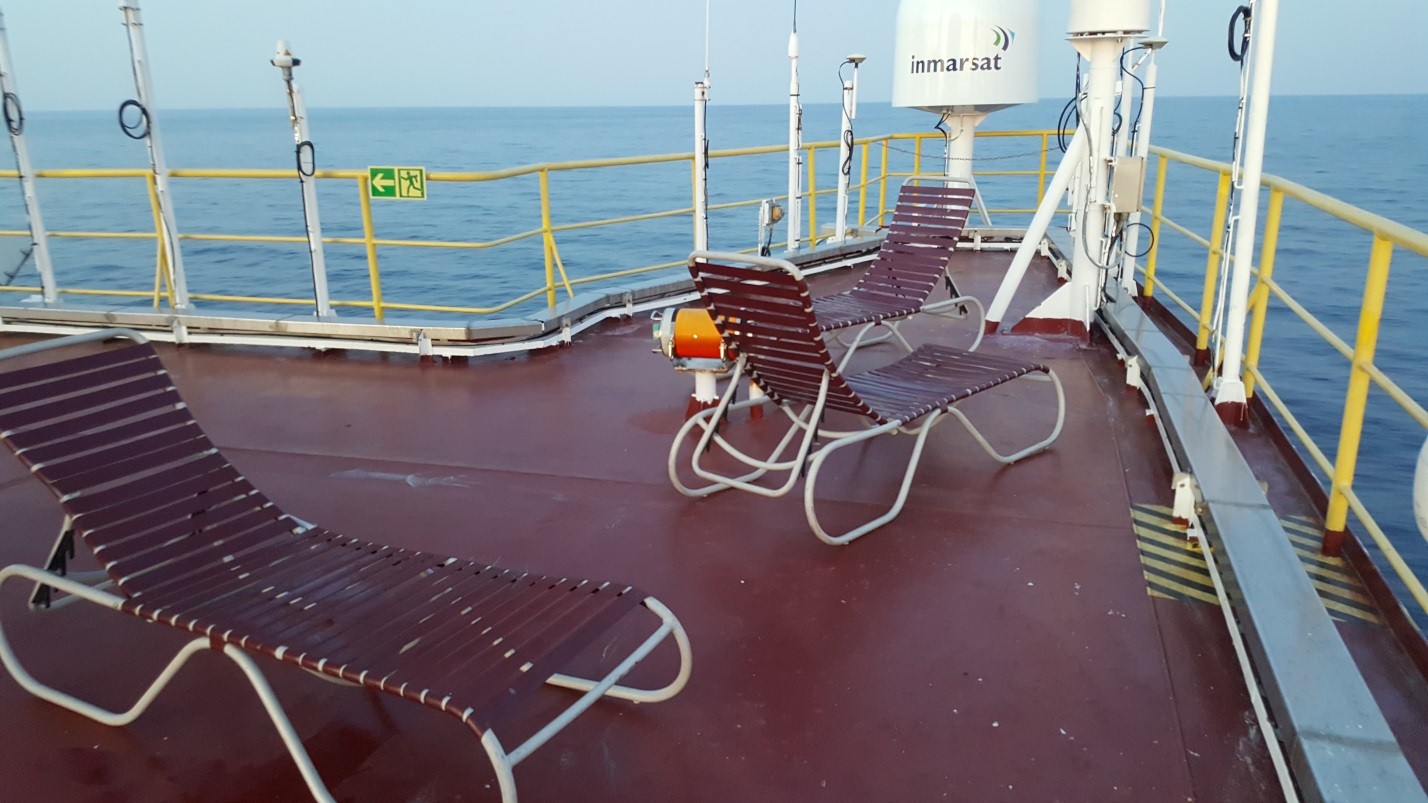 The ‘Steel Beach’. Image: Jennifer Wurtzel
The ‘Steel Beach’. Image: Jennifer Wurtzel
Many people, including myself, enjoyed retreating to the ‘steel beach’, the outdoor top deck of the ship where lounge chairs were setup for enjoying sunsets and stargazing.
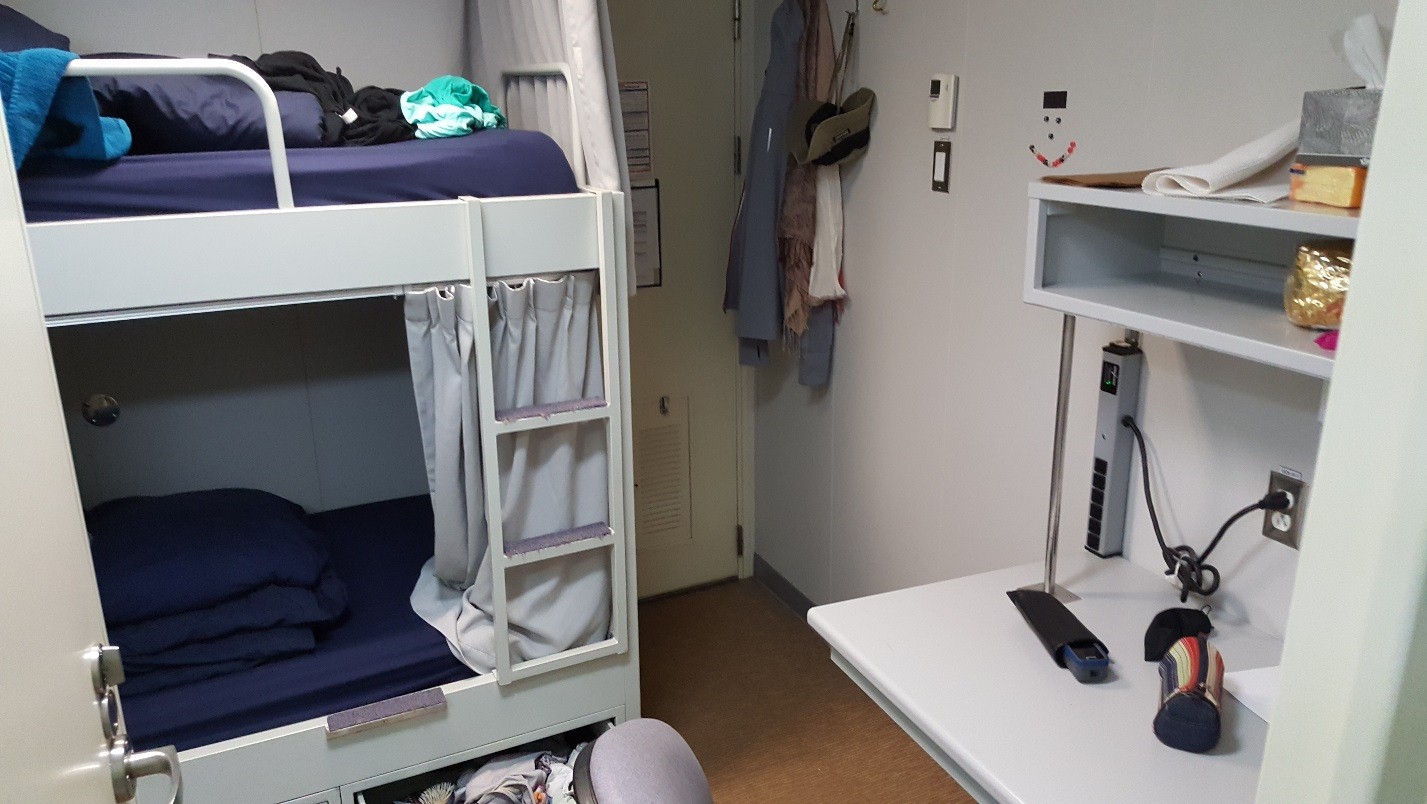 Two person cabins. Image: Jennifer Wurtzel
Two person cabins. Image: Jennifer Wurtzel
We shared our small 2-person cabins with people on the opposite shift so that we had the room to ourselves on the offshift.
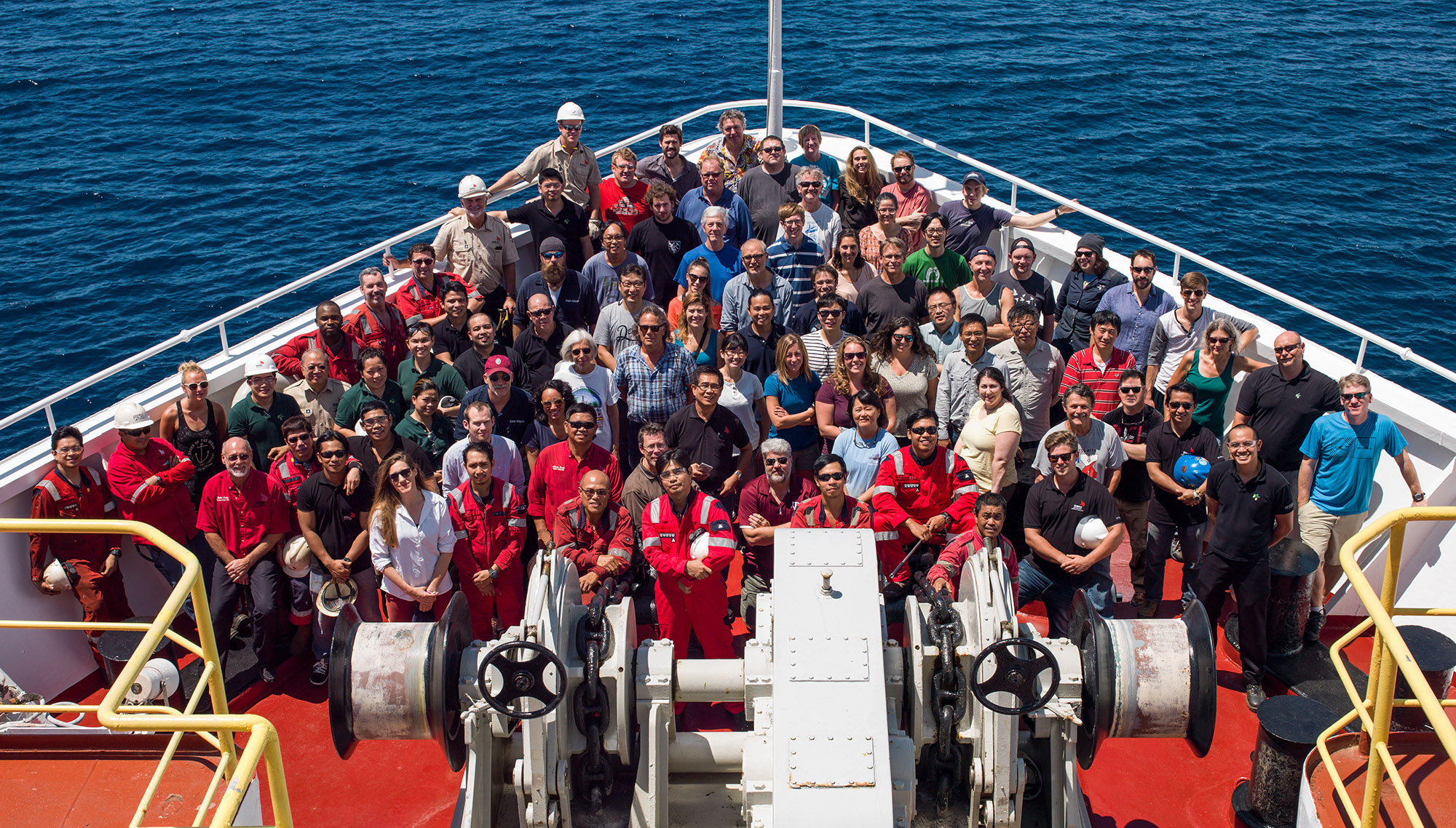 All the scientists, techs, officers, staff and crew of Expedition 363. Image credit: Bill Crawford
All the scientists, techs, officers, staff and crew of Expedition 363. Image credit: Bill Crawford
About 120 people live on the JR when it’s cruising. In addition to the 30 scientists, there were also about 20 marine technicians (they keep the instruments running and teach the scientists how they work), 15 catering/steward staff, and 60 officers, crew, and engineers. There was also a doctor and infirmary, well-stocked with equipment and medications for any foreseeable medical emergency.
Dining on the JR was a fantastic experience. Meals were served four times a day and eggs were always available to order since every meal was breakfast time for someone. There were usually three main dishes to choose from (or try all three!), with both western and Asian options, catering to the mostly Filipino crew. I personally really enjoyed the Filipino options. Soups, a salad bar, a fruit bar, and rice were also stocked and baked goods such as muffins, doughnuts, and cake were available 24/7. There was even a soft-serve ice cream machine!
As the boat doesn't stop in any ports during its expeditions, certain options started disappearing as we got further into our two-month cruise. Bananas were gone in the first week. By the seventh week, we were out of lettuce and the fruit salad consisted of only honeydew melon. But the chefs were still able to provide excellent meals right until the last day.
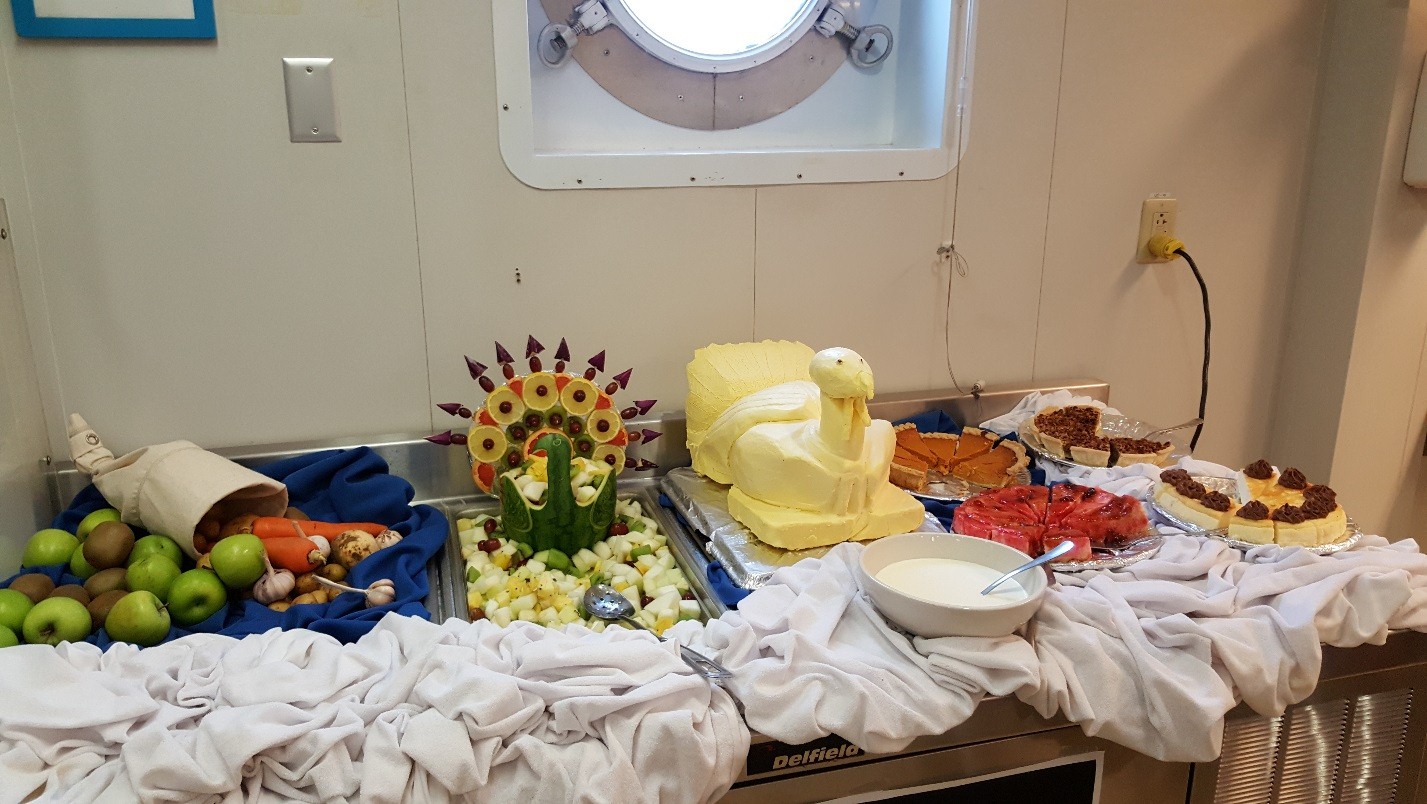 The Thanksgiving spread at the fruit and dessert bar. Image credit: Jennifer Wurtzel
The Thanksgiving spread at the fruit and dessert bar. Image credit: Jennifer Wurtzel
On occasions like Halloween, US Election Day, and Thanksgiving, the chefs went all out, decorating the mess hall and providing special meals. Once a week, we had an outdoor barbecue on deck, where picnic tables allowed us to enjoy the tropical breeze while we ate.
By the end of our two month expedition, we had collected just short of 7 km of core covering the last 23 million years. But the science doesn’t end on the ship. The next step will be to convene at the IODP core repository in Texas and begin taking samples for our personal research. In two years, we’ll meet up again (hopefully in a beautiful beach resort) to share what we’ve learned.
For more information about my role on the JR:
- https://oncirculation.com/2016/11/01/part-1-taking-discrete-samples/ (has cool video of sediments expanding!)
- https://oncirculation.com/2016/11/17/part-2-the-measurements/
For more about Expedition 363:
- http://publications.iodp.org/preliminary_report/363/
- https://iodp.tamu.edu/scienceops/expeditions/pacific_warm_pool.html
For more about the JR:
